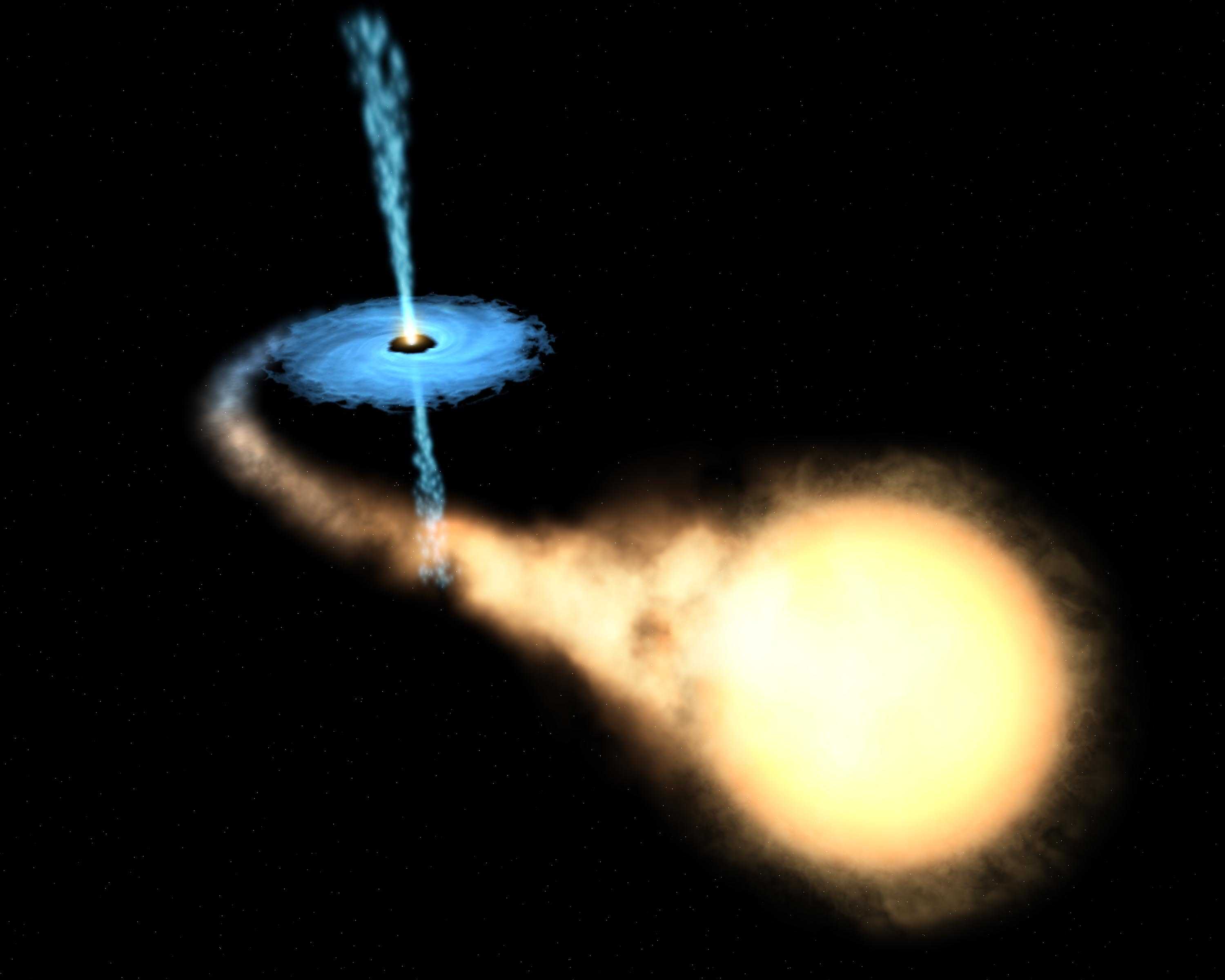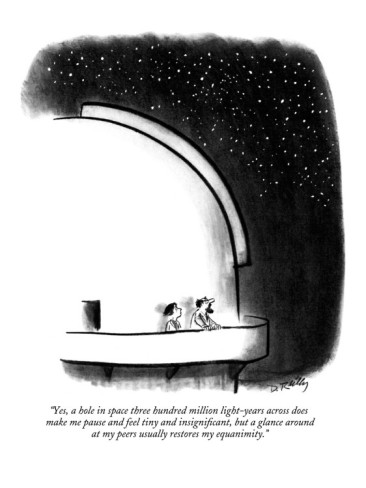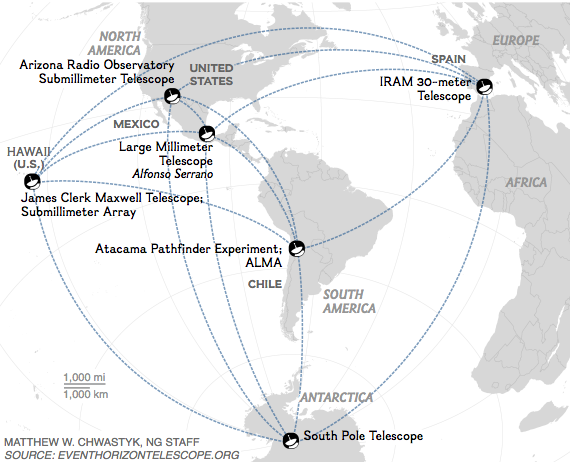
To date, we have never actually seen a black hole – but this may soon change. On April 10, the Event Horizon Telescope (EHT) successfully completed its ten-day-long observation period, gathering data on the predicted supermassive black hole at the center of our galaxy.
The Event Horizon Telescope is not a single instrument, but a worldwide array of radio telescopes. Each was synchronized using an atomic clock to ensure they captured the same data from different points across our planet. Doing so essentially created an Earth-sized lens, enabling the collaborating astronomers to capture extraordinary radio frequency detail at great distances. In the just completed observation, the telescopes were focused on Sagittarius A*, a theorized black hole at the center of our Milky Way galaxy.
Photographing a black hole is no small feat – which is why every image we have of one thus far has been an artist’s conception (including the one above). We can’t actually view them directly, because the gravitational pull of the black hole prevents light from escaping. Complicating matters, friction at the edge of a black hole causes brightness too great to overcome with optical telescopes. However, scientists have found another way to see into the abyss: instead of looking directly for the hole, they look for ‘edge-cases,’ known more formally as a black hole’s ‘event horizon.’ Large amounts of radio waves are emitted by gaseous matter when torn apart, the exact situation at the edges of a black hole. By observing the distribution patterns of these excited ‘last gasp’ radio waves, astronomers can pinpoint where a black hole exists –at least in theory. They have been difficult to confirm.

Fortunately, we have a black hole to study right in our own backyard: The aforementioned Sagittarius A* is a mere 100,000 light years away, at the center of our galaxy. At an estimated four million times the mass of our Sun, it should have some spectacular events on its horizon. Despite this mass, however, it is relatively tiny, meaning the astronomy teams associated with EHT have been looking for a veritable needle in a haystack. As one astronomer put it, it’s the equivalent of you or I trying to photograph a DVD on the surface of our moon. Needless to say, this has made collecting radio imagery of a black hole a considerable challenge. Over the 10 years of its existence, the EHT has tried and failed to capture black hole data several times. Fortunately, last week’s network endeavor included a telescope at the South Pole, a very dark and thus clear observation point, as well as the world’s most powerful radio telescope, the Atacama Large Millimeter/submillimeter Array (ALMA). ALMA is actually a group of 66 radio dishes in Chile. The addition of ALMA increased the scopes’ precision tenfold, making this particular data collection round more promising.

As of April 10, the challenge of collecting clear and precise observational data of a black hole may have been met. Despite bad weather at some of the eight observatory sites that were gathering the data, the EHT astronomers are pleased with the information gathered. Unfortunately, this is only the first step to producing an image of a black hole. We won’t know the full implication of the recorded data for many months, if not years. Each observatory recorded so much data for the project that it can’t be transmittable electronically. This means the accumulated information — all 1,024 hard drives worth — will be mailed to the Event Horizon Telescope’s processing centers at MIT Haystack and the Max Planck Institute for Radio Astronomy in Bonn, Germany. From there, the data has to be synchronized, analyzed, and compiled. Only then will we know if the EHT has produced the first real images of an event horizon. If it does, it will be our first physical proof of black holes — and a stunning affirmation of Einstein’s 100-year-old theory of relativity, which predicted these spatial regions.

No comments yet.